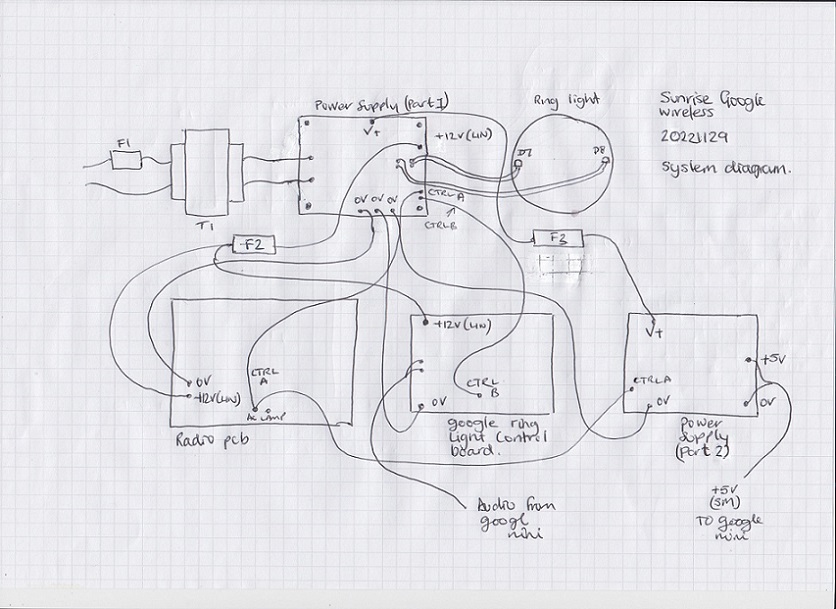|
The the project required the conduction of 3 new boards, these are namely:
- PSU Part 1 - A linear power supply and ring light driver board.
- PSU Part 2 - A 5V switch mode power supply board for the Google mini.
- A Google ring light control board – to detect when the Google speaker was active.
These work as follows:
PSU 1 replaces the original transformer of the radio and feeds a regulated +12V into the radio’s low voltage AC input. This 12V is also passed to the ring light control board in order to monitor the google home mini for activity.
When the radio is switched on, originally the radio PCB provided power to a set of lamps inside the ring light of the radio. There are two sets of terminals for the lamps on the radio PCB and these are marked up as 'AC Lamp' or 'DC Lamp', and either may have been used in the original radio.
However, as we are supplying DC to the radio PCB, now when it is switched on one of the 'AC Lamp' terminal will provide a DC voltage that can be uses to switch on a ring light circuit and perform other functions as required, in the diagram below I have tagged up this new control line as CTRL A. In practice the lower of the two AC input terminals on the radio PCB is connected via the radio on/off switch to the left-hand 'AC Lamp' terminal when it is viewed in the upright position.
When the radio is switched on CTRL A is used to switch a transistor driver in PSU 1 that illuminates two white LEDs inside the ring light, CTRL A is also fed to PSU 2 and in turn deactivates the supply to the Google mini. Leaving the google mini and switch mode power supply turned on when the radio was on created so much interference the LW & MW bands of the Bush radio were unusable, however by switching these off all of the bands of the Bush radio could be used.
If the radio is off and the switch mode power supply and google mini are on, whenever the google mini generates any sound this is detected via the Google ring light control board which in turn generates a second ring light control signal CTRL B, this is fed to the ring light driver circuit on PSU 1 which lights the ring light.
Finally 3 fuses have been used in the final design F1 @250mA and F2 & F3 @1A.

|